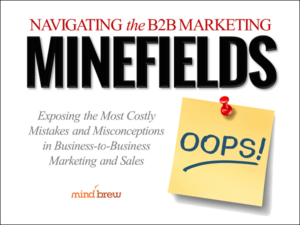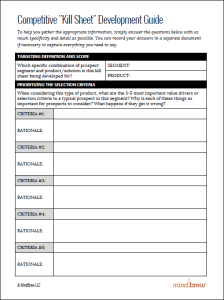Over the last few years, more and more B2B marketing groups have begun to evaluate their efforts and investments in terms of revenue contribution. This certainly makes some intuitive sense in the interest of sales and marketing alignment. And to be clear, tracking revenue contribution is a significant improvement over focusing on non-financial measures like impressions, clicks, or even leads.
That said, we need to sound a warning about how changing the “R” in ROI from “return” to “revenue” is fraught with danger and unintended consequences.
It should go without saying that revenue and profit are two very different things. As you can’t actually spend revenue, companies need profit to pay the bills and invest in growth. And while decisions based on revenue impacts may be a lot better than nothing, they can be dramatically different than decisions based on profitability impacts.
Let’s say we’re evaluating two campaigns on the basis of revenue contribution:
- Campaign A generated revenues of $46, 500 on an investment of $6,700.
- Campaign B generated revenues of $33,750 on an investment of $7,800.
Which campaign is the keeper? Which campaign should you run again? In which campaign should you consider investing even more next time around? Looking at “revenue on investment”, we’d say that Campaign A is the clear winner. For every dollar we invested in Campaign A, we generated $6.94 in revenue, compared to Campaign B’s $4.33 in revenue for every dollar invested.
So, pour the coal to Campaign A!!!! Right?
Hold on. Not so fast. Each of these campaigns attracted a very different mix of customers, who ultimately purchased a different mix of products, that each have different costs and different margins. As a result, these campaigns look dramatically different from a profitability perspective:
- Campaign A generated profits of $4,925 on an investment of $6,700.
- Campaign B generated profits of $10,763 on an investment of $7,800.
Now we see that for every dollar invested in Campaign B, we make back our dollar plus another $1.38 in profit. This is nearly 2X what we make on Campaign A, where we only generate an additional $0.74 after getting our dollar back. For making payroll, keeping the lights on, and funding additional growth, Campaign B is clearly the better investment.
Yet, we’d draw the exact opposite conclusion looking at revenue contribution.
And that’s why leading marketing operations aren’t content with revenue-based metrics. These groups have learned, often through some very painful experiences, just how inaccurate and misleading a revenue perspective can be. And striving to be best possible “stewards” of their companies’ resources, they’re going many steps further and measuring impacts to profitability, customer lifetime values, and so on.
Simply put, leading marketing operations are putting the real “R” back in ROI.









